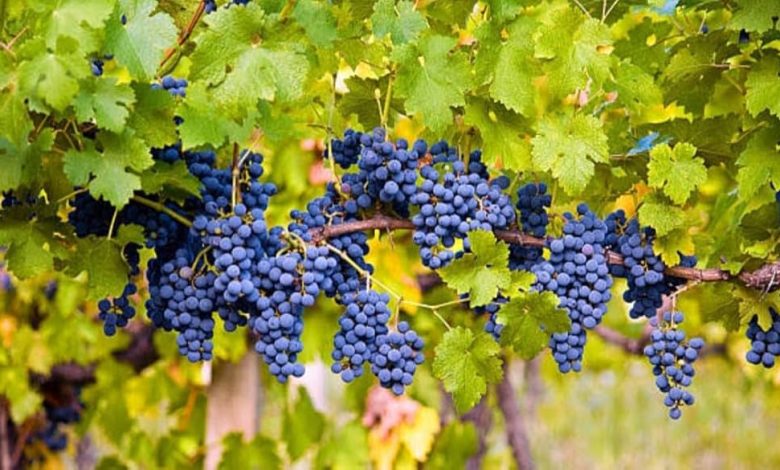
With careful selection of grape vines varieties adapted to local conditions, even modest plots can yield satisfying harvests of sweet, juicy fruit. This article examines four grape varieties that perform consistently well across various British regions, offering clusters rich in flavour and reliable in production. These choices emphasise dessert grapes, ideal for fresh eating, while accounting for the temperate climate that defines much of the country. By focusing on hardy, disease-resistant options, growers can achieve results that justify the initial effort. The following sections detail each variety’s characteristics, alongside broader guidance on successful management.
The fruit trees specialists at ChrisBowers advise that prioritising varieties with proven resilience to damp conditions enhances outcomes in the British garden. For a selection of suitable plants, consider grape vines for sale. Proper site selection, facing south or southwest for maximum light exposure, forms the foundation of success, complemented by vigilant pruning to promote airflow and reduce mildew risks.
Adapting to the British Climate for Successful Grape Cultivation
The United Kingdom’s weather, marked by mild summers and frequent rainfall, shapes the approach to grape growing. Average temperatures rarely exceed 20°C in July, and humidity levels often hover above 70%, creating challenges for fruit ripening and disease prevention. Yet, these conditions favour certain European hybrids developed for cooler zones, which accumulate sugars efficiently without excessive heat. Grapes thrive in USDA hardiness zones 6 to 9, aligning well with most southern and central English counties, though northern areas benefit from greenhouse protection.
Soil preparation remains straightforward: vines prefer well-drained, neutral to slightly alkaline ground with a pH of 6.0 to 7.5. Incorporate organic matter such as compost to improve structure, aiming for a depth of at least 60cm to accommodate extensive roots. Avoid waterlogged sites, as root rot from phytophthora fungi poses a common threat. In clay-heavy regions like the Midlands, raised beds or mounds elevate plants, ensuring excess moisture drains away.
Sunlight exposure dictates yield potential; vines require 1,500 to 2,000 annual sunshine hours for optimal sweetness. South-facing walls in urban gardens, such as those in London suburbs, mimic Mediterranean microclimates, extending the growing season by reflecting warmth. For rural settings in the Cotswolds, pergolas or arbours provide vertical support while maximising light. Wind protection is equally vital—hedgerows or fences shield tender shoots from coastal gales in Devon or exposed uplands in Yorkshire.
Pest management focuses on prevention. Slugs and aphids arrive early, controllable through barriers like copper tape or biological controls such as nematodes. Powdery mildew, prevalent in humid Augusts, demands early intervention with sulphur-based sprays, applied fortnightly from bud break. These measures, combined with mulching to retain soil moisture, sustain vine health through the 20- to 30-year lifespan typical of productive specimens.
Gardeners often overlook the role of pollinators, but self-fertile varieties reduce reliance on bees during erratic springs. Monitoring via apps tracking local forecasts helps time interventions precisely. With these adaptations, British growers report harvests of 5 to 10kg per mature vine annually, sufficient for family consumption and preserving. This foundation ensures the selected varieties deliver on their promise of abundant, sweet clusters.
Flame: The Vibrant Red Seedless Performer
Flame grapes stand out for their striking crimson hue and crisp texture, making them a rewarding choice for UK cultivators aiming for eye-catching produce. Originating from a California cross of Cardinal and Muscat of Hamburg, this variety has adapted seamlessly to British conditions since its introduction in the 1990s. Seedless by nature, Flame berries weigh around 5g each, forming compact shoulders in bunches up to 500g. Ripening mid-August to early September, they offer a balanced sweetness—approximately 18° Brix—with subtle muscat aromas that elevate simple salads or cheese boards.
Planting Flame vines suits both outdoor and protected environments. In southern England, such as Kent orchards, they flourish against brick walls, where reflected heat hastens maturation. Container growth works well in northern patios, using 30-litre pots filled with ericaceous compost amended with perlite for drainage. Space plants 1.8m apart to allow lateral spread, training via the guyot system: a single cordon extended annually to channel energy into fruiting spurs.
Care routines emphasise consistency. Irrigate deeply during dry spells in June, providing 20 litres per vine weekly to prevent berry shrivelling, a risk in rain-shadow areas like East Anglia. Fertilise sparingly with a high-potassium formula in spring, avoiding excess nitrogen that promotes foliage over fruit. Pruning occurs in dormant winter: retain two buds per spur, removing 80% of last season’s growth to concentrate sugars.
Disease resistance bolsters Flame’s appeal; it shows moderate tolerance to downy mildew, though vigilance against botrytis bunch rot in wet harvests is advised. Thin clusters in July by snipping every third berry, enhancing size and flavour concentration. Yields peak at five years, delivering 4-6kg per vine in good years, with berries storable for two weeks in the fridge.
British growers appreciate Flame’s versatility for fresh eating or juicing, its bold colour adding visual interest to harvest displays. Sourced from specialist suppliers, including those offering fruit trees for sale, these vines integrate easily into mixed borders, complementing apple espaliers. Overall, Flame rewards patience with clusters that burst with summer essence, even under overcast skies.
Regent: A Hardy Hybrid for Robust Yields
Regent grapes, a German-bred hybrid of Diana and Chambourcin, excel in the UK’s variable weather, providing dark, plump berries with inherent toughness. Developed in 1967 for northern European vineyards, this variety matures to near-black skins encasing juicy, seed-filled flesh at 16-19° Brix. Bunches average 300g, with individual grapes reaching 8g, ideal for snacking or transforming into compotes. Harvest falls late September to October, aligning with cooler autumns that enhance its mild, fruity notes without foxing.
Ideal for exposed sites, Regent thrives in the northwest, from Lancashire to Welsh borders, where its cold hardiness—down to -20°C—prevents winter dieback. Plant in loamy soils enriched with lime if acidic, spacing 2m apart for cordon training against fences. Greenhouse cultivation in Scotland amplifies production, though outdoor rows suffice in milder zones.
Maintenance proves undemanding. Water moderately post-planting, tapering to drought tolerance once established; overwatering invites phylloxera, a soil-borne pest rare but monitored via rootstock certification. Apply balanced feed in March, followed by sulphate of potash in July to bolster skin thickness against cracking in September rains.
Pruning follows the rod and spur method: select vigorous canes in December, cutting to four buds for renewal spurs and eight for fruiting rods. This balances vegetative growth with crop load, preventing alternate bearing. Mildew resistance, a hallmark of Regent’s breeding, minimises fungicide needs, though copper sprays deter leaf spot in humid Thames Valley gardens.
Yields stabilise at 6-8kg per vine by year four, with autumn foliage turning crimson for added ornamental value. Berries store well in cool sheds, retaining firmness for weeks. UK enthusiasts value Regent for its adaptability to smallholdings, where it pairs with soft fruits in polytunnels. Procured through established nurseries listing fruit trees for sale, Regent vines establish quickly, offering dependable sweetness amid Britain’s temperate unpredictability.
Golden Champion: Bright Berries for Temperate Gardens
Golden Champion grapes bring a sunny disposition to British plots, their pale yellow skins and honeyed taste evoking rarer warmth. A New Zealand selection from Muscat Hamburg and other parents, introduced to the UK in the 1980s, this variety ripens early September, yielding loose clusters of 400g with 10g berries at 20° Brix. The aromatic profile—hints of pineapple and apricot—suits dessert plates or homemade sorbets, distinguishing it from plainer types.
Suited to central England’s clay loams, Golden Champion performs outdoors in Herefordshire, benefiting from orchard shelter. For urban balconies in Manchester, dwarf rootstocks in 25-litre tubs facilitate management, positioned to capture afternoon sun. Train as a fan against trellises, allowing shoots to cascade for aesthetic appeal in cottage gardens.
Cultivation stresses moderation. Mulch with bark in spring to suppress weeds and stabilise moisture, irrigating only during prolonged dries to avoid diluting flavours. Feed with tomato fertiliser bi-monthly from May, emphasising phosphorus for root development in poorer soils.
Annual pruning in late winter shapes productivity: remove crowded spurs, leaving pairs of buds on permanent arms to direct sap flow. This variety’s vigour demands discipline, as unchecked growth leads to smaller fruits. It resists black rot effectively, though ventilate greenhouses to curb grey mould in dewy mornings.
Mature vines produce 5-7kg annually, with thinning in June—retaining outer berries—promoting uniformity. Post-harvest, clusters hang in garages for gradual ripening, extending enjoyment into November. Gardeners in the Home Counties praise Golden Champion for its low-maintenance charm, integrating seamlessly with pear espaliers. Available via outlets featuring fruit trees for sale, these vines illuminate harvests with their golden promise, countering grey skies with inherent brightness.
Buckland Sweetwater: Classic Sweetness for Indoor and Out
Buckland Sweetwater, a heritage variety tracing to 19th-century English greenhouses, delivers timeless appeal through its translucent green-to-amber berries. Synonymous with Victorian vineries, it ripens mid-September, forming heavy trusses of 600g with 6g grapes reaching 22° Brix. The fine, muscat-like flavour, free of acidity, makes it perfect for fresh consumption or elegant ices, embodying refined British horticulture.
Versatile across climates, Buckland Sweetwater excels under glass in cooler regions like the Peak District, yet tolerates outdoor walls in Sussex. Plant in fertile, sandy mixes, 2.5m apart, using single-wire supports for single-stem training. Pot culture suits conservatories, with repotting every three years to refresh nutrients.
Routine care prioritises airflow. Water copiously in summer, allowing topsoil to dry between sessions to mimic natural cycles; excess leads to weak stems. Incorporate bone meal at planting for phosphorus, supplemented by liquid seaweed monthly for trace elements.
Pruning adheres to the established rod system: in January, cut back to basal buds, fostering short spurs that bear next season’s crop. Its susceptibility to mildew necessitates spacing and occasional bicarbonate sprays, though hybrid vigour limits issues.
Established plants yield 7-9kg, thinned mid-summer for plumpness. Berries keep two months in cool storage, skins toughening post-picking. Esteemed by allotment holders in the Southeast, Buckland Sweetwater evokes tradition while yielding abundantly. Sought from suppliers with fruit trees for sale, it anchors collections, rewarding with clusters of pure, enduring sweetness.
Pruning, Protection, and Long-Term Vineyard Management
Effective pruning underpins grape success in the UK, directing energy towards fruit over foliage. For all varieties discussed, winter cuts in December—post-leaf fall—remove 70-90% of growth, depending on system. The cordon method suits space-limited gardens: maintain two arms at 1m height, spurring to two buds. Fan training, ideal for walls, establishes tiers of rods, pinched in summer to six leaves beyond bunches. Tools like secateurs, sterilised with alcohol, prevent disease transmission.
Protection strategies address seasonal threats. Frost pockets endanger buds in April; fleece covers or smoke pots mitigate damage in frost-prone vales. Summer hail, sporadic in the Southwest, prompts netting over rows. Integrated pest management employs pheromone traps for moths and companion planting—marigolds deter nematodes—reducing chemical use.
Long-term management involves renewal. Every five years, replace ageing arms with basal shoots to sustain vigour. Soil tests annually guide amendments, targeting 2% organic content. Record-keeping via journals tracks yields, aiding variety rotation if declines occur.
These practices extend vine productivity to 25 years, with incremental improvements in cluster density. British growers find satisfaction in this rhythm, transforming modest investments into sustained abundance.
Harvesting Techniques and Culinary Applications
Harvesting demands timing attuned to ripeness cues: colour change, soft detachment from stems, and taste tests confirming sugar levels. For outdoor vines, clip clusters mornings in dry weather, using shears to avoid wounds inviting infection. Indoor crops benefit from staggered picks, extending supply.
Post-harvest handling preserves quality. Cool immediately to 4°C, sorting out damaged berries to curb spoilage. Storage in perforated bags lasts weeks; freezing halves retain texture for smoothies.
Culinary uses abound. Fresh clusters grace tables, while juices simmer into reductions for game. Jams from Regent or compotes from Flame capture essence, shelf-stable for winter. Wine experimentation with Golden Champion yields light, aromatic batches, fermented simply with campden tablets.
These applications diversify the garden’s output, fostering self-sufficiency. With minimal equipment—a press or dehydrator—harvests fuel year-round enjoyment, affirming the value of homegrown grapes in British kitchens.





